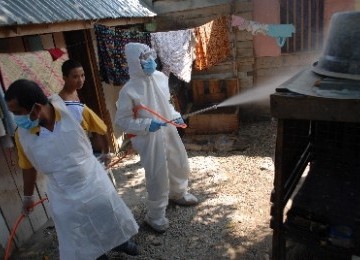TEMPO.CO , Bantul -Head of the Center for Veterinary Wates Yogyakarta, Fadjar Sumping Tjatur Sense, said the spread of Avian Influenza virus Clade (gene type) 2.3.2 H5N1, which affects ducks, has penetrated 13 districts / municipalities in Central Java Province and two districts in Yogyakarta.
Fadjar not name the 13 districts / municipalities in Central Java affected suspected virus outbreak mutated H5N1 2.3.1. "In previous years, the virus that targeted thousands of chickens in Indonesia. In DIY regional reports emerged of Bantul and Kulonprogo, "he told Tempo on Wednesday, December 11, 2012.
Fadjar said the report was the result of the latest information on the spread of the bird flu virus of unknown provenance. Other recent information, he said, came from Wonosobo.
The report says the number of chickens, which were around the cage 2.3.2 ducks infected with H5N1, died suddenly. "But we're not sure it's due to Avian Influenza or not, the sample was studied in the laboratory," he said, Thursday, December 12.
He said his lab team also not sure the source of this new generation of avian influenza. He said, the lab who oversaw the East Java, Central Java and Yogyakarta, it received reports of the death of the first duck in September 2012 Wonosobo ago.
However, it can not be an indicator to sum up the region as early contracted the virus. "It could be because there are other areas have been infected but not send the report to us," he said.
Fadjar explained that there are three possible sources of the spread of the virus which is now also widespread in Asian countries such as China, Vietnam and Bangladesh.
He said the virus could be spread by migratory wild birds, movement of poultry imported both legally and illegally to Indonesia or genetic mutations that occur in 2.3.1 H5N1 virus (old) in some local areas of Indonesia. "The pattern of spread faster than before because now extends beyond Java and attacked tens of thousands of ducks," said Fadjar.
http://www.tempo.co/read/news/2012/12/13/173448071




